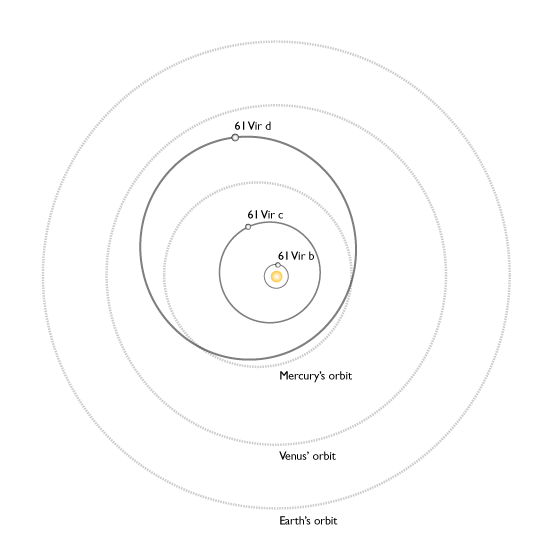As is usually the case, there’s been little or no shortage of interesting developments in the field of extrasolar planets. The biggest recent news has been the announcement at the Barcelona conference of a definitive mass for the ultra-short period transiting planet CoRoT-7b. It weighs in at a mere 4.8 Earth Masses (copy of the Queloz et al. preprint here).
Recall that CoRoT-7b caused quite a stir earlier this year with its weird properties. The planet’s year is a fleeting twenty hours and twenty nine minutes, and it induces a tiny transit depth of 0.03%. Unfortunately, the parent star presents a less-than-ideal target for high-precision radial velocity work. It has spots that come and go, and its stellar activity produces frustratingly noisy Doppler measurements. As a result, at the time of CoRoT-7b’s initial announcement, there was no definitive measurement of the planet’s mass.
That’s changed, however, with an unprecedentedly all-out deployment of the HARPS spectrograph. From the Queloz et al. preprint:
A total of 106 measurements between 30 and 60 minute exposure time each were obtained over 4 months, and with sometimes 3 measurements being taken on the same night.
Now in my notoriously biased opinion, such observational enthusiasm is perhaps best reserved for stars such as Alpha Cen B, but a fair argument can be made that the massive investment of time did pay off. Remarkably, the radial velocity data set shows that there are two short-period planets in the CoRoT-7 system. The outer companion, which doesn’t transit, has a period of 3.7 days and at least eight Earth masses. Most dramatically, by combining the mass and radius measurements of CoRoT-7b, one arrives at a density of 5.5 grams per cubic centimeter, essentially identical to that of the Earth, suggesting that the planet is largely composed of refractory materials. (I hesitate to apply the term “rocky” to the CoRoT-7c landscape for the same reason that I’d refrain from describing the Amazon Delta as “icy”.)
In a very real sense, the HARPS campaign on CoRoT-7b has given us our last first look at a fundamentally new category of planet — that is, a world lying in the factor-of-fourteen mass gap spanned by Earth and Uranus. And, from exo-political point of view, the stakes surrounding this discovery were very high. The first density measurement of a planet in this category could just as easily have been made by teams combining high-precision Doppler measurements with either (1) Warm Spitzer, (2) ground-based photometry, (3) Kepler, (4) MOST, (5) HST, or (6) CoRoT. So I can imagine that there was a certain impetus underlying the scheduling of that huge block of HARPS time.
The discovery could, however, still be waiting to be made. Despite all the effort with HARPs, there remains a hefty 70% error on the density determination. This means that there’s a ~16% chance that CoRoT-7b is actually less dense than Neptune.
I’ll go out on a limb: CoRoT-7b’s density will turn out to be anomalously high. More than 90% of “super Earths” will turn out to be “sub-Neptunes” as far as their density is concerned.

